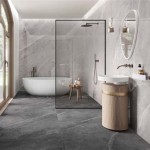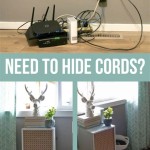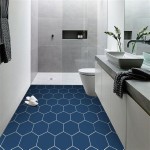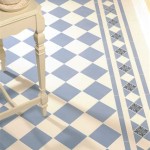What Floor Lamp Is the Brightest? Understanding Light Output in Floor Lamps
Determining the "brightest" floor lamp necessitates understanding how light output is measured and which technologies provide the most illumination for a given power consumption. The perception of brightness is subjective, influenced by factors like color temperature and beam angle. However, the quantifiable measure of brightness is lumens, representing the total amount of visible light emitted by a light source. A lamp's brightness is directly related to the lumen output of its bulb or integrated light source. Therefore, the brightest floor lamp is the one that can accommodate or has integrated within it, the highest lumen output.
Beyond lumens, power consumption expressed in watts is also pertinent. While watts measure the amount of energy a lamp consumes, it does not directly correlate with brightness. Older incandescent bulbs produced fewer lumens per watt compared to modern LED technology. As a result, a 100-watt incandescent bulb might produce fewer lumens than a 20-watt LED bulb. This efficiency difference is crucial when selecting a floor lamp for maximum brightness while minimizing energy usage.
The design of the floor lamp also plays a role. A floor lamp with a reflector shade can direct and concentrate light, increasing perceived brightness in a specific area. Conversely, a lamp with a diffused shade will spread the light more evenly, resulting in a less intense, but broader illumination. The intended use of the floor lamp – task lighting, ambient lighting, or accent lighting – will influence the optimal design and light output required.
Key Point 1: Lumens as the Primary Indicator of Brightness
The most accurate way to determine the brightness of a floor lamp is by examining its lumen output. Lumens (lm) quantify the total amount of visible light emitted by a light source. Higher lumen values indicate a brighter light source. For example, a floor lamp marketed as having "800 lumens" will theoretically produce twice the light output of a floor lamp labeled "400 lumens," assuming all other factors are equal, such as color temperature and light distribution.
It is essential to differentiate between lumens and watts. Watts measure the power consumption of the light source, whereas lumens measure the light output. Incandescent bulbs are known for their inefficient conversion of electricity into light, requiring higher wattage to produce a given lumen output. LED bulbs, on the other hand, are significantly more efficient, producing a higher lumen output with a lower wattage. This efficiency translates to energy savings and reduced operating costs.
Manufacturers often provide lumen information on the packaging or product specifications. Consumers should carefully review these specifications when comparing different floor lamps. When replacing a bulb in an existing floor lamp, it is critical to select a bulb with the appropriate lumen output for the desired level of brightness. A bulb with too few lumens will result in insufficient illumination, while a bulb with too many lumens could be overly bright and potentially uncomfortable.
The area a floor lamp needs to illuminate should also be considered when selecting the appropriate lumen output. A small room may only require a floor lamp with a moderate lumen output, while a larger room will require a floor lamp with a significantly higher lumen output to achieve adequate illumination. The height of the floor lamp and the positioning of the light source relative to the area being illuminated also affect the perceived brightness and coverage.
Key Point 2: The Impact of Bulb Technology on Brightness and Efficiency
The type of bulb used in a floor lamp significantly influences both its brightness and energy efficiency. Incandescent bulbs, once the standard, are now largely being phased out due to their low efficiency. They produce a significant amount of heat as a byproduct, wasting a substantial portion of the energy they consume. Halogen bulbs, an improvement over incandescent, offer slightly better efficiency and a brighter, whiter light, but still lag behind more modern technologies.
Compact fluorescent lamps (CFLs) are more energy-efficient than incandescent and halogen bulbs, producing more lumens per watt. However, CFLs contain mercury, posing environmental concerns during disposal. Furthermore, CFLs typically take a few moments to reach their full brightness, which can be inconvenient for some users. The availability of CFLs has diminished in recent years as LED technology has become more prevalent.
Light-emitting diodes (LEDs) represent the most efficient and versatile lighting technology currently available. LEDs produce a high lumen output with significantly lower wattage compared to incandescent, halogen, and CFL bulbs. They also have a longer lifespan, reducing the need for frequent replacements. LED bulbs are available in a wide range of color temperatures, allowing users to customize the light to their preferences. Furthermore, many LED floor lamps offer dimming capabilities, providing greater control over the light output.
The integrated LED array in some floor lamps represents a further advancement. Instead of using a replaceable bulb, these lamps feature a built-in LED light source. This design often allows for a slimmer profile and more innovative designs. Integrated LEDs also tend to be more energy-efficient and longer-lasting than traditional LED bulbs. However, if the integrated LED fails, the entire lamp may need to be replaced, which can be a drawback.
Key Point 3: Floor Lamp Design and Light Distribution
The design of a floor lamp significantly impacts how its light is distributed and perceived. The shade material, shape, and angle all play a role in directing and diffusing the light. Floor lamps with opaque shades direct light upwards or downwards, creating a more focused beam. This type of lamp is suitable for task lighting or accent lighting.
Floor lamps with translucent shades spread the light more evenly throughout the room, creating a softer, more ambient illumination. The color of the shade also affects the color of the light emitted. For example, a lamp with a colored shade will tint the light, creating a specific mood or atmosphere. A white or off-white shade will provide a more neutral light.
Reflector shades are designed to maximize light output in a specific direction. These shades are often found in torchiere-style floor lamps, which direct light upwards towards the ceiling. The reflected light then diffuses throughout the room, providing a bright, indirect illumination. Torchiere floor lamps are often used to brighten large spaces.
Multi-headed floor lamps offer greater flexibility in light direction and intensity. These lamps feature multiple adjustable light heads that can be individually positioned to provide light where it is needed most. Multi-headed floor lamps are ideal for reading, crafting, or other tasks that require focused light. Some multi-headed floor lamps also offer dimming capabilities, allowing users to adjust the brightness of each light head independently.
The height of the floor lamp also influences its light distribution. Taller floor lamps can provide broader coverage, while shorter floor lamps are better suited for smaller spaces or task lighting. The positioning of the floor lamp relative to furniture and other objects in the room also affects its light distribution. Placing the lamp behind a sofa or chair can create a softer, more diffused light, while placing it next to a desk can provide focused task lighting.
In conclusion, understanding the interplay between lumens, bulb technology, and floor lamp design is critical for determining the brightest floor lamp for a specific application. Consumers should carefully consider their lighting needs and preferences when selecting a floor lamp to ensure optimal illumination and energy efficiency.

Artiva Ufo 73 In Modern Chrome Super Bright Led 5 Arched Floor Lamp With Touch Dimmer Led802268fc The Home

The World S Brightest Torchiere Lamp

Artiva Ufo Super Bright 73 In H Black Brushed Steel Led 5 Arched Floor Lamp With Touch Dimmer Led802268bsn The Home

Floor Lamp 30w 3000lm Super Bright Led Torchiere Lamps With Remote Touch Control 71 In Tall Modern Standing For Living Room Bedroom Office 2700k 6500k Black Walmart Com

Artiva Ufo 73 In H Super Bright Antique Satin Brass 5 Arched Led Floor Lamp With Touch Dimmer Led802268fab

Brightech Sky Dome Plus Led Floor Lamp Torchiere Super Bright With Reading For Living Rooms Offices Dimmable Tall Standing

Ufo Super Bright 73 In H Black Brushed Steel Led 5 Arched Floor Lamp With Touch Dimmer

Led Floor Lamp 18w Super Bright For Living Room Adjustable Black

Brightech Sky Led Torchiere Super Bright Standing Floor Lamp Brushed Nickel

Cricut Bright 360 Floor Lamp Maneuverable Craft Light







